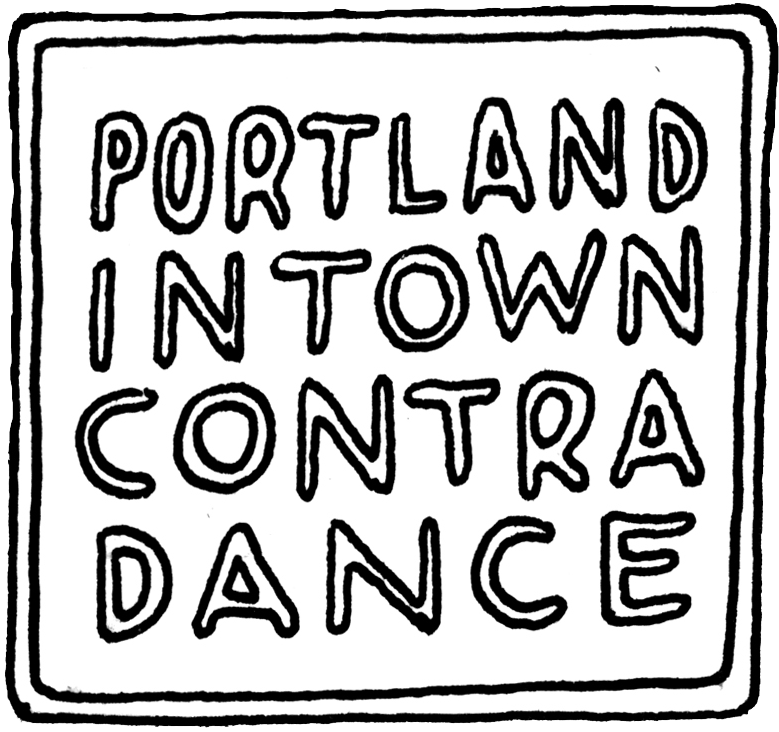The History of the Art We Love
Modern dancers new to contra dancing may not know much about the tradition outside of what we've learned attending our local series or the experiences we've had dancing.
The living tradition we participate in is uniquely American and, like most American history, understanding it more deeply requires holding and sitting with multiple, complex stories of oppression. Facing our history means broadening our view to include the carefully omitted violence that shaped, and continues to shape, the world. This is hard work, and we hope you will join us in this important and worthwhile pursuit.
As we inquire into the tradition, we uncover the Black authorship of fundamental and emblematic modern music and dance practices. We uncover that our roots are in slavery.
Modern contra dance is a result of a cultural mosaic that began in the 1600s through colonization of America by Europeans. Longways set dances and the jig and reel musical repertoire of New England seem to originate from English, Irish, and Scottish colonists. Many of these people faced forms of oppression in their countries of origin and sought freedom from that by searching for a new home. These same oppressed Europeans came to America as oppressors, murdering Native tribes and erasing their histories to create their own. Black Africans brought music and dance traditions to America that constitute some of our most beloved elements of our favorite pastime, which we will cover in more detail below. They were brought here through chattel slavery by white settlers.
This work of inquiring, uncovering, and facing our history allows us to understand our tradition more deeply and celebrate the people who contributed to our tradition more fully.
Contributions by Black artists include, but are not limited to:
Music:
Black musicians were a mainstay at early balls and social gatherings, playing for both white and Black dancers of all classes. "As early as 1690, [en]slave[d] fiddlers played for dances on plantations in Virginia... and, by the mid-eighteenth century, [en]slave[d] musicians were common at white social functions, both urban and rural, throughout the American colonies." (Jamison, "Square Dance Calling: The African-American Connection")
Slavery was the mechanism that brought African musical traditions in contact with European musical traditions in the United States: "[T]he predominance of music in [B]lack African culture made the assimilation of new and different musical styles nearly as natural as drawing breath. Thus, despite slaveholders attempts to regulate against it, cultural exchange between [B]lack [African]s and whites was occurring throughout the colonies, undeniably changing the American cultural landscape." (Morgan. “Rock and Roll Unplugged: African-American Music in Eighteenth-Century America.”)
Black composers created new music for dancing, adapted non-dance tunes for dancing, led bands and orchestras, and introduced stylings like syncopation to the music that are, to this day, many of our favorite stylings of dance music. Waltzes, polkas, quadrilles, schottisches, contredanses, reels, jigs-- are all styles in which we can see authorship by Black artists alive in today's musical stylings and repertoire.
Fiddles were incredibly popular among early Black musicians and enslaved musicians and it has been noted that in the 18th and 19th century, "even where fiddle melodies may have been purely European-derived, fiddles were often played "African"-style: for examples, a second player- a straw-beater- was sometimes used to add rhythm to the melody..." or percussive techniques were used on stringed instruments.
Additionally, the practice of having a "set" of tunes rather than simply one tune played during a dance selection was a creation of these early Black musicians and callers. "[T]hese European dance forms were more flexible and open to transformation and improvisation, at least within the performance of African Americans." (Szwed & Marks, “The Afro-American Transformation of European Set Dances and Dance Suites.”)
Instruments & Instrumentation:
Many of the instruments we recognize as staples in the contra dance hall either have their origins in Africa or were played by Black musicians in ways that white colonizers had never experienced. A few examples include:
The banjo came from the African instrument the banjar. The earliest American versions were made from dried gourds, sticks and thin strips of dried animal gut.
The tambourine came from the African instrument the toombah.
Though the fiddle has its origins in Western Europe, it was common for enslaved Africans in America to play fiddle at early dances. These musicians' way of playing was different from that of Europeans, creating a new form of folk instrumentation still popular today.
Many slaveholders banned enslaved Africans from playing African drums. This led to Black musicians seeking portable orchestral-style drums, which they then compiled to create the novel "drum kit", a collection of percussion instruments brought together in front of one player. Needless to say, this transformed American music!
(Johnson, "How banning the African drum gave birth to American music." & Morgan, “Rock and Roll Unplugged: African-American Music in Eighteenth-Century America.” & Szwed & Marks, “The Afro-American Transformation of European Set Dances and Dance Suites.”)
Calling:
The earliest English-style "country dances" in which contra finds its roots did not have callers; rather, dancers would be provided lessons, memorize the dances, and then be instructed on the floor by a "Dance Master." "The earliest reference to dance callers, all of whom were African American, date from shortly after the introduction of the French cotillions and quadrilles in America [following the War of 1812]. This suggests that calling might have evolved in the [B]lack culture as an alternative to the formal instruction that white dancers received at dancing schools. In the call and response tradition of African music and dance, calling may have evolved as slaves called out the figures of the European dances at their own plantation frolics... [C]alling is 'at least partly rooted in the older tradition in which African Master drummers signal and direct dancers...' ...At some point dance calling was adopted by white musicians as well though exactly when is hard to determine." By the mid-1800s, dance calling was common. (Jamison, "Square Dance Calling: The African-American Connection")






